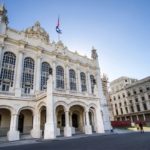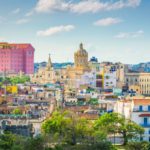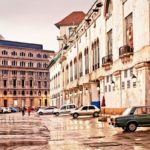Cuba is a country teeming with history, culture, and vibrant colors. It’s a place where echoes of the past reverberate through colonial architecture and where tales of revolutionary heroes pervade every street and plaza. Today, we’re taking you on a journey to the top five Cuban Revolutionary Sites that encapsulate the struggles, victories, and legacies of Cuba’s rich revolutionary history.

1. Museum of the Revolution, Havana
Starting off in the capital city of Havana, the Museum of the Revolution is a must-visit site for any history aficionado.
The building itself is a testament to the nation’s past. Once the Presidential Palace, it was repurposed after the revolution in 1959 to house exhibits that chronicle the tumultuous era leading up to, during, and after the revolution.
Inside, you’ll find a trove of artifacts, photographs, documents, and displays. Perhaps the most striking exhibit is the Granma Memorial, as it features the yacht used by Fidel Castro and his fellow revolutionaries to return to Cuba from Mexico in 1956.
The museum’s eclectic mix of architectural grandeur and revolutionary relics make it an unforgettable stop in Havana.
2. Moncada Barracks, Santiago de Cuba
Moving to the southeast of the island, the Moncada Barracks in Santiago de Cuba holds immense significance in Cuba’s revolutionary history.
This is where a young Fidel Castro and his rebels launched the first armed attack against Fulgencio Batista’s government on July 26, 1953.
Although the attack was a failure, it is widely considered the start of the Cuban Revolution.
Today, the bullet-riddled building is home to a school and a museum dedicated to the July 26th Movement.
Inside, the preserved offices of Batista’s military leaders tell a story of courage and uprising against oppression. It’s a site that allows visitors to walk through history, understanding the pivotal moments that shaped Cuba’s future.
3. Che Guevara Mausoleum, Santa Clara
In the heart of Cuba, Santa Clara city holds an impressive monument dedicated to one of the revolution’s most iconic figures: Ernesto “Che” Guevara.
The Che Guevara Mausoleum is a tribute to the Argentine revolutionary who played an instrumental role in overthrowing Batista’s regime.
The mausoleum houses a bronze, 22-foot statue of Che, as well as a museum exhibiting his life and role in the revolution.
Beneath the monument rests the remains of Guevara and also several of his fellow combatants from his ill-fated Bolivian campaign.
This site offers a profound reflection on the sacrifice and dedication of the revolution’s heroes. Consequently, it is a powerful stop on this historic tour.
4. La Cabaña, Havana
Returning to Havana, La Cabaña, or the Fortress of San Carlos de la Cabaña, is another key revolutionary site.
Overlooking the city’s harbor, this 18th-century fortress was seized by the revolutionaries in January 1959. It served as a prison and execution site during the early days of the revolution.
Every evening, the “Cannon Ceremony” takes place, recreating the historical 9 PM firing, signaling the closing of the city gates.
With an expansive view of the city and an insight into the revolution’s darker days, La Cabaña presents a stark contrast to the city’s lively charm, revealing the heavy toll of the revolution.
5. Playa Girón, Bay of Pigs
Our final destination takes us to Playa Girón, located on the infamous Bay of Pigs. Here, in 1961, Cuban exiles backed by the U.S. CIA launched a failed invasion, a pivotal event in the Cold War.
The area now boasts a museum showcasing artifacts and photographs, as well as accounts of the ill-fated invasion.
The museum gives voice to Cuban perspectives on the invasion and highlights the resilience of a nation defending its revolutionary ideals.
The surrounding natural beauty of the bay, teeming with diverse marine life and spectacular coral reefs, further enhances the visit to Playa Girón, offering a bittersweet juxtaposition of beauty and conflict.
Visiting Cuba’s revolutionary sites
Cuba’s revolutionary sites are more than just tourist attractions; they’re portals to a bygone era. Each site tells its own unique story of struggle, resilience, and revolution. Consequently, this enables visitors to comprehend the true depths of Cuba’s revolutionary history.
From the grandeur of Havana’s Museum of the Revolution to the solemnity of the Che Guevara Mausoleum, the resilience shown at Moncada Barracks, the imposing presence of La Cabaña, and the site of the infamous Bay of Pigs invasion at Playa Girón, the tale of Cuba’s revolution unfurls.
As you trace the footsteps of iconic figures like Fidel Castro and Che Guevara, reflect on the nation’s resilience amidst the turmoil. Remember the brave people who fought for their ideals and shaped the Cuba we see today. These sites aren’t just fragments of history but living testaments to a vibrant nation’s undying spirit.
- The Art of Cuban Poster Design: History, Techniques, and Cultural Significance - May 23, 2023
- Taking A Vintage Car Tour In Havana - May 23, 2023
- Top 5 Cuban Revolutionary Sites - May 23, 2023








